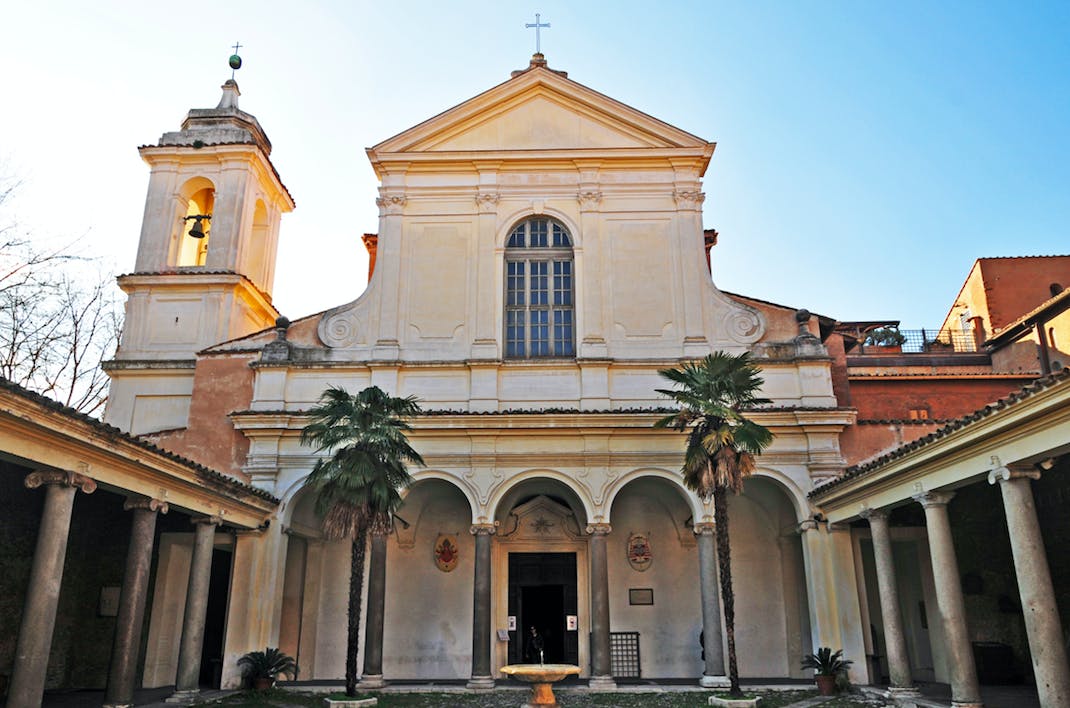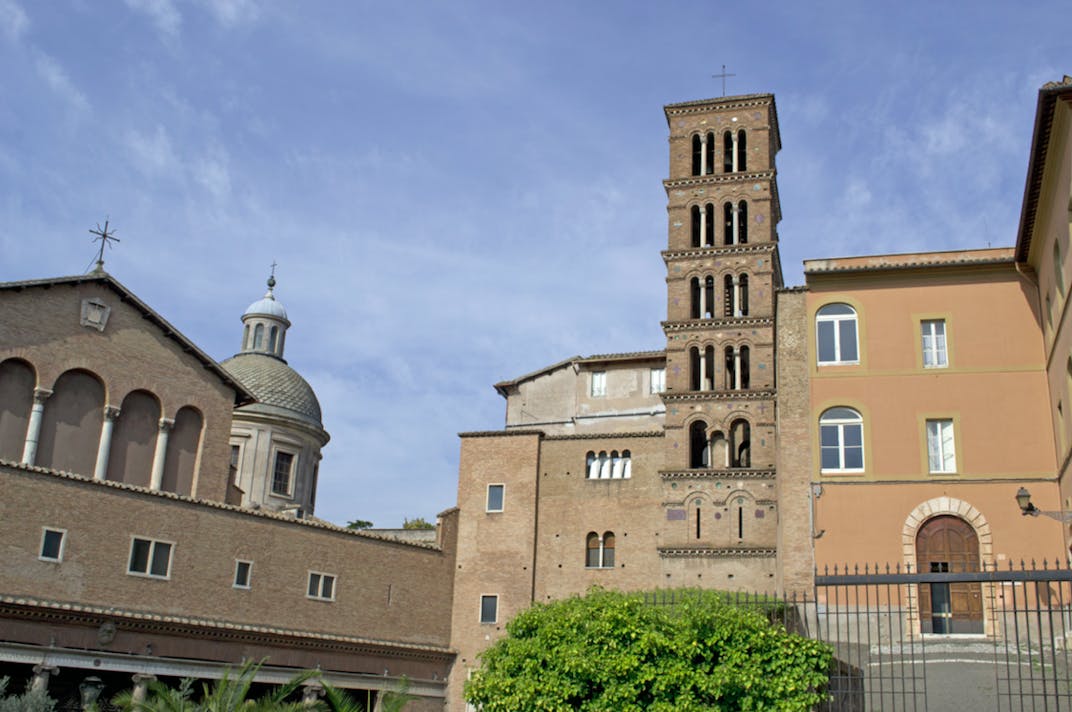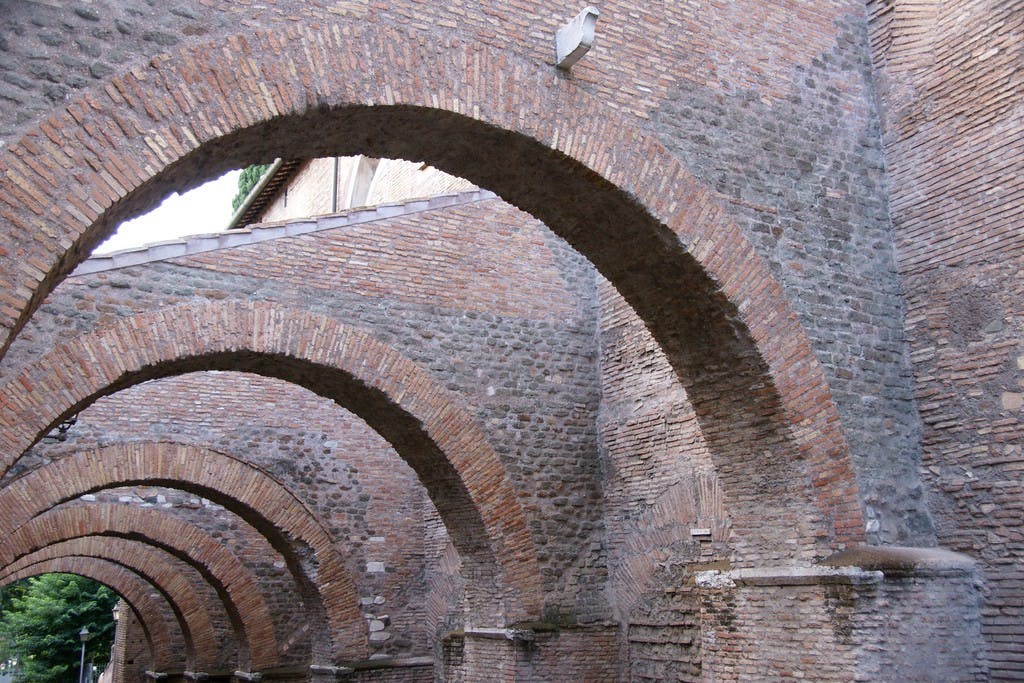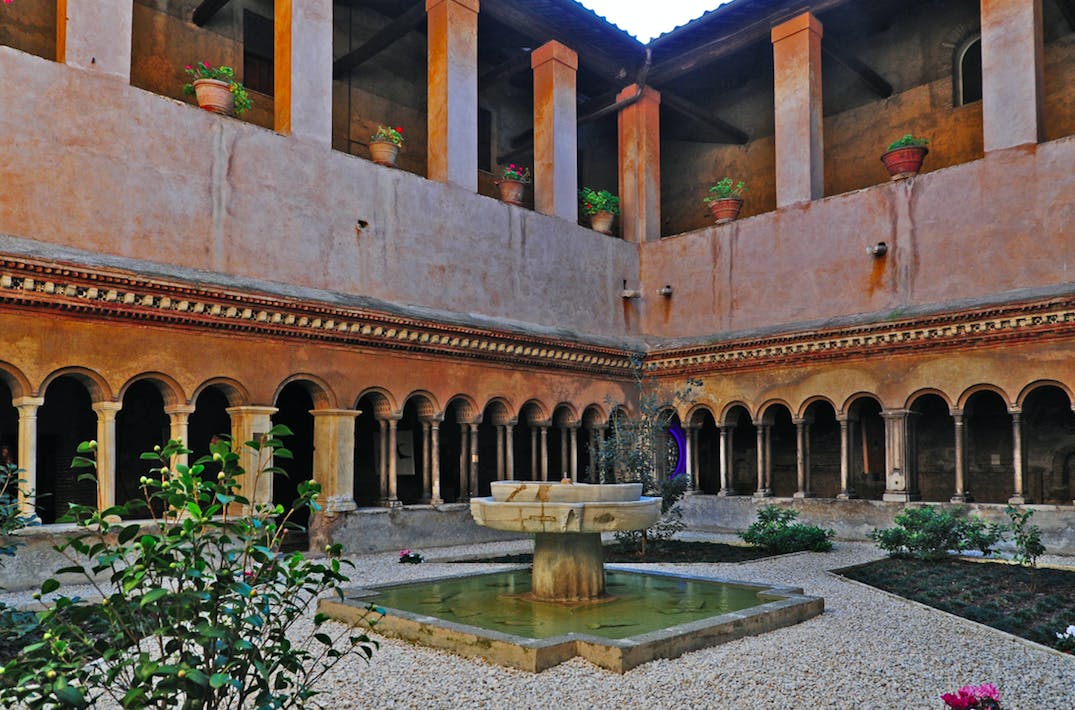Giuseppe Tedesco reveals the undiscovered hidden gems in Rome to Musement
There are few who can imagine that a few hundred meters from the Colosseum, true treasures of art and artistic human experiences unique to Rome, are hidden underground.
I would like to describe at least three of them, all connected by a common theme: medieval art and imperial Roman history.
It’s exactly for these reason that they are considered gems. Rome is definitely not well-known for its medieval art treasures, but the city is so big and rich in layers of art history that those treasures can be found, you just have to know where they are.
The treasures I’m referring to are in the Celio, the only district of Rome that, for better or for worse was “saved” from the urban reconstruction of the Counter-reform commissioned to Bernini and Borromini by the Popes, and specifically it’s three churches, The Basilica of San Clemente, the Church of San Giovanni e Paolo al Celio and the Basilica of Santi Quattro Coronati.

The Basilica of San Clemente
In the Basilica of San Clemente, you’ll be stunned by the beauty of the Byzantine mosaic of the apse of the 12th century and the magnificent swirls of the Cosmatesque floor. Also, you can admire the uniqueness of the choir at the center of the basilica. However, what makes this Basilica really special is the presence of two underground levels, one with the early Christian basilica of the 4th century AD and the other with an isolated Roman from the first century A.D.
Going down the long staircase you will see a sorta catacomb leading to the old basilica that reaches a depth of about 8 meters below the ground. Here you will see a fresco depicting the legend of the miracle of the failed capture of Saint Clement by a Roman nobleman, Sisinnius. It has been realized through a form of ‘comic strip’ before comic strips were even invented, where you can find the first words in Italian vernacular. The talking figures present written words next to their heads. To be precise, the characters are shouting ‘traite fili de le pute!!’ in which I leave you the task of translating. This startling inscription was critical for scholars to outline the stages of the history of the Italian language.
Going back to the surface, you will find an oasis of peace not far from San Clemente, the Church of San Giovanni e Paolo al Celio, in the heart of Ancient Rome. The church is built in Baroque style with some post-neoclassical touches, including pastel colors and radiantly splendid lighting. It’s truly a beautiful place to get married, except that the wait time to celebrate the rite in this church is about 12 to 18 months.
The Church of San Giovanni e Paolo al Celio is located in front of a quiet pedestrian square next to Villa Celimontana (another wonder of the Celio). Due to an incredible combination of elements, you cannot hear a single voice even from 200 meters away from the Coliseum.

View of the Church of San Giovanni e Paolo al Celio, and the bell tower
From here, if you look up, you can admire one of the most beautiful Romanesque bell towers of Rome. If you glance over the gate beside you, you will notice a big travertine structure. It is the aqueduct of Claudius. Its base is located ten meters below ground and the pillars that support it are huge and imposing. At this point, it’s easy to get carried away by your imagination, thinking about the tens of thousands of people who would travel to the Colosseum and the Baths of Caracalla in the era of Imperial Rome, or the millions of gallons of water transported every second into the city via the aqueduct.
Awakening from this daydream, you head towards the Clivus Scauri, an authentic Roman road with arches on the Church side. There, from a small door, you can access a Roman villa that was later turned into a Roman “insula” – i.e. a tenement with many shops on the ground floor and apartments on the first one full of frescoes and, subsequently re-used as a domus, where some Roman soldiers were martyred. Frescoes, tabernacle, places of worship, everything is mixed in a fascinating unicum.

Photo credit: romana klee via Visualhunt.com / CC BY-SA
Still enchanted by what we have seen, we move towards the Basilica of Santi Quattro Coronati. This place is unknown even to many Romans who hurriedly pass by every day, perhaps to go to the nearby St John’s Hospital, or to go to the Colosseum, but hidden are really artistic and spiritual treasures.
For 450 years, the Basilica dei Santi Quattro Coronati has been the home of the cloistered convent of the Augustinian nuns. The nuns live there, choosing a life of work and prayer. During the day, you can see the Vespers being recited in the space reserved for them at the altar of the church at 6 am, at 12 pm and 6 pm. You can speak with them through an iron gate, to ask permission to visit Saint Sylvester’s Oratory. It is a chapel from the 12th century decorated with frescoes thanks to the donation of Constantine, a historical counterfeit commissioned by Pope Innocent IV to prove to Emperor Frederick II, his fierce competition, that Constantine had given the keys to the City of Rome to the Pope, and that therefore the temporal power of Rome lied with him alone.
In this historic church, History is so accessible that you can almost touch it. You must ask for the keys to the chapel from the nun responsible for conversing with visitors: as in a novel, the keys are delivered through the famous “wheel” and must be returned the same way. For a couple of years now, the Augustinian Community has agreed to open two days a month for another wonder that remained hidden for centuries: the Gothic Hall, a huge living room completely painted in 1200 by the same artist who painted the crypt of the Anagni Cathedral (the Third Master of Anagni) and where justice was probably administered in medieval times.

The magnificent cloister of the Basilica of Santi Quattro Coronati
Entering the Gothic Hall, your jaw will drop due to the vibrancy of colors, depicted by the cycles of the Four Seasons, the Vices, the Virtues, and the 12 months of the year, and especially for the grandeur of the frescoes: there are 350 square meters of perfectly preserved art. Over the centuries, the Hall was rebuilt and the frescoes were nowhere to be found. Only in 1995, they were found under other layers of frescoes and plaster and the long restoration giving us the privilege to admire them began.
Entering the Basilica, you can see the wonderful Cosmatesque floor. A “historiated” floor with traces of inscriptions, written votes, and parts of the temple’s pediments. Looking at the columns of the 400 A.D dated original church, they are almost all different from each other, you can guess what kind of work efforts were necessary to build this place of worship and spiritual encounter in the dark ages.
Finally, we immerse ourselves in the spiritual peace of the medieval cloister, where the spring of the central fountain is the only sound other than footsteps.
While you look at the tombstones of the early Christians that cover the walls, the twisted comatesque columns, the octagonal Early Christian church and all the other magnificent works, every single beauty blends with the others to become a real “Great Beauty”.
